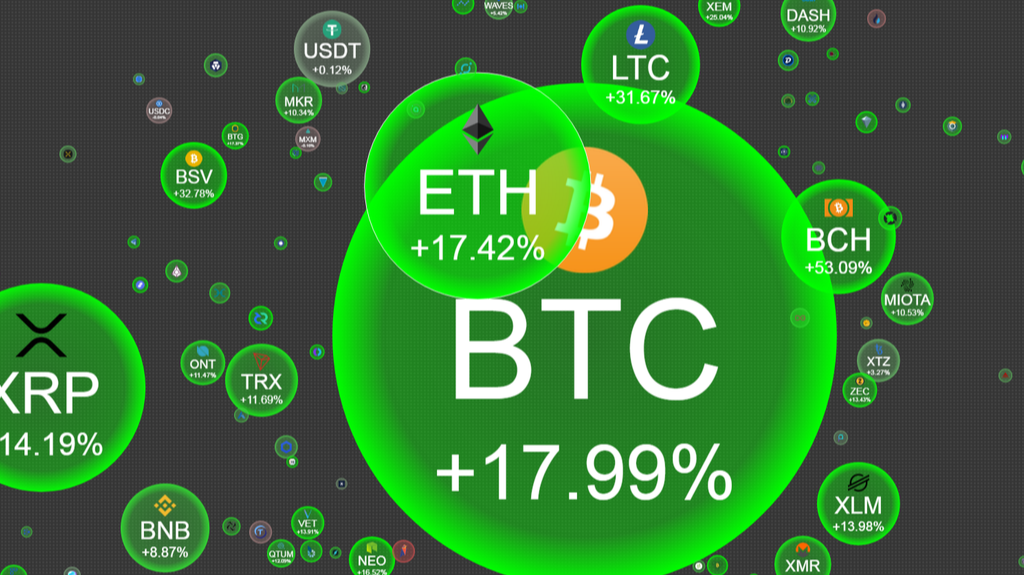Cryptocurrency Bubbles 2024 is characterized by a sharp rise in a digital asset’s value that is followed by an abrupt and dramatic drop in price. Fear of missing out (FOMO), media hype and speculative investments are frequently the driving forces behind price surges. These elements combine to produce a situation where prices are exorbitant and unrelated to the true worth of the underlying asset.
Table of contents.
- Characteristics of a Cryptocurrency Bubble
- Chapter 2: Bubble Detection Methods
- Identifying rapid price surges with low trading volume
- Evaluating metrics like market capitalization to identify overvaluation
- Social media sentiment analysis to gauge FOMO and hype levels
- Unsustainable price increases detached from fundamentals
- FOMO (Fear Of Missing Out) driving impulsive buying
- Increased media hype and mainstream attention
- Comparing to historical bubble markets (e.g., 2017 ICO bubble)

The Impact Of Cryptocurrency Bubbles
- Investor Losses: Those who purchased during a bubble crash may sustain large losses.
- Market Volatility: A bubble bust can cause instability and a rise in volatility in the market.
- Regulatory Scrutiny: Regulations are frequently drawn to bubbles, which may result in limitations and supervision.
Historical Perspective Of Crypto Bubbles
- The 2017 Bitcoin Bubble: In late 2017, the price of Bitcoin skyrocketed to around $20,000, but then crashed to about $3,000 in less than a year.
- The ICO Craze (2017–2018): Many of the ventures that raised millions of dollars during the Initial Coin Offering (ICO) frenzy ultimately proved to be frauds or flops.
- The 2021 Altcoin Frenzy: A market correction resulted in significant losses for investors despite the exponential expansion of several altcoins.
The Future Of Cryptocurrencies
Cryptocurrencies keep developing and becoming more widely accepted, despite the difficulties caused by bubbles. Reducing the frequency and intensity of bubbles is anticipated to occur as technology advances, investor awareness increases, and regulatory frameworks improve.
- Cryptocurrencies like Bitcoin and Ethereum could become more widely accepted as a form of payment by businesses and consumers.
- Financial inclusion: Crypto could provide financial services to the underbanked population, especially those without access to traditional banking systems.
- Supply chain management: Blockchain technology, the underlying tech of crypto, could revolutionize supply chain tracking and management, improving transparency and efficiency.
- Decentralized Finance (DeFi): DeFi applications like lending and borrowing could become a viable alternative to traditional financial institutions.
How To Protect Your Financial Assets
- Establish Realistic Goals: To help you make well-informed decisions, clearly define your investing goals and timeframes.
- Employ Stop-Loss Orders: To guard against unexpected declines, put stop-loss procedures in place.
- Keep Up: Remain informed on news, developments, and market trends related to cryptocurrencies.
On one hand, some analysts point to the rapid rise in prices of certain cryptocurrencies, particularly lesser-known altcoins, as a sign of a speculative frenzy. This echoes past bubble periods where hype and FOMO (fear of missing out) drove prices far beyond their perceived utility.

Cryptocurrency Bubbles And Regulations
Regulations are essential for reducing the hazards connected to bitcoin bubbles. Token sales, trading procedures, and investor protection all benefit from clear norms that may prevent fraud and keep the market stable.
Ultimately, the jury is still out on whether 2024 is a bubble year for cryptocurrencies. Careful monitoring of market movements, investor behavior, and technological advancements will be crucial in determining the future trajectory of the crypto market.pen_sparktunesharemore_vert
How FOMO And Bubbles Are Related
A common factor in bubble-like behavior is the fear of missing out (FOMO), which causes people to make rash investments without doing adequate investigation.
Whether 2024 is witnessing another cryptocurrency bubble is a hotly debated topic. While the market has certainly seen significant growth, there are factors suggesting both potential for a bubble and reasons to believe it might be a period of sustained expansion.
Cryptocurrency’s Benefits And Risks
Although there are risks associated with investing in cryptocurrencies, there is also a chance for significant profits for individuals who make prudent market decisions.
However, there are counterarguments suggesting this might be a period of legitimate growth. Unlike previous bubbles, institutional investors are now entering the market, bringing stability and a more long-term perspective. Furthermore, the underlying technology, blockchain, continues to evolve, with real-world applications emerging in areas like finance, supply chain management, and even voting systems. This increased utility could support long-term price growth rather than a speculative bubble.

Conculation.
Cryptocurrency bubbles are common in the digital asset market. Recognizing the warning signs, comprehending the underlying causes, and learning from past errors may all help you make more informed decisions.
